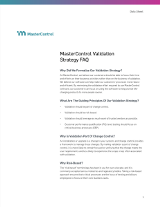
GxP Lifeline
What Connected Quality Means for Training
For regulated companies, there’s a whole lot riding on training. If someone isn’t trained or is trained improperly, the life-saving products of life sciences companies can become life-ending products. Of course, that’s a rather extreme example. Other consequences of inadequate or poor training are problems with regulators and customers. Training managers need a quick way to check on training for their employees. They need to know if that training is effective. And they need access to tools that help them be proactive.
We’ve been talking a lot lately about the importance of connected quality data, and this is a prime example. Being on a platform and able to integrate with other systems gets a company’s data all in one place. The next step is using data analytics to give training managers a complete picture of what’s going on with training and what they need to do next to stay on track.
Timing Is Everything
One of the biggest problems in quality is ensuring everyone is up to date on training. This can even be difficult on digital systems. A training manager might use a training management system to set up automatic alerts to let employees know when they need to complete training. In theory, that employee would see the alert, log in to the system, complete the training, and the story would have a happy ending. In practice, this isn’t always the case. If an employee gets hit with too many training alerts at once, he or she might miss one or put them off until a more convenient time. However, if the more convenient time is after the training due date, there’s a problem. In some cases, even being a day late on training can have compliance ramifications.
Dashboards that offer a holistic overview of training in an organization are the answer to this problem. A training manager can use the software to show how many training tasks need to be complete that week, that day, the next week, etc. Connected quality data in this case can tell a manager which employees can’t work on a product line because they haven’t been trained. That manager can then swap out the employee for one who is trained or use a manufacturing software solution to enable the employee to immediately complete the necessary training.
Trained vs. Trained on Paper
It isn’t enough for employees to be trained; they have to be effectively trained. It’s quite simple for employees to rush through training without absorbing anything if they don’t think it applies to them or they’re just trying to get it done. This type of training might help companies pass an audit, but it’s a moot point if causes major product quality issues. Determining whether or not training is effective comes down to the employees and the training tasks. A report showing which employees have high failure rates on exams or the most late training tasks helps managers pinpoint which employees might need extra help. However, sometimes the problem has nothing to do with the employee.
Designing training programs that are effective is difficult if training managers can’t see the results. Connected training data can tell managers how the training performs by looking at how the employees perform. For example, if an exam has a high failure rate among dozens of employees, the problem might be with the exam. Similarly, if a question on an exam is frequently missed, it might need to be reworded. Exams that take a long time to complete may need to be broken up into multiple exams. Connected exam data lets managers scrutinize their training in a way that’s impossible on paper.

